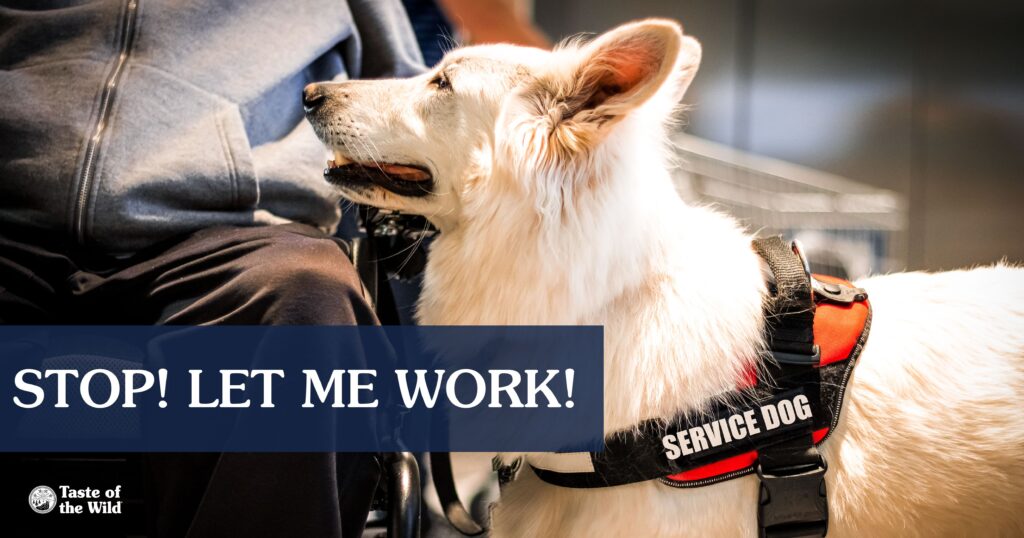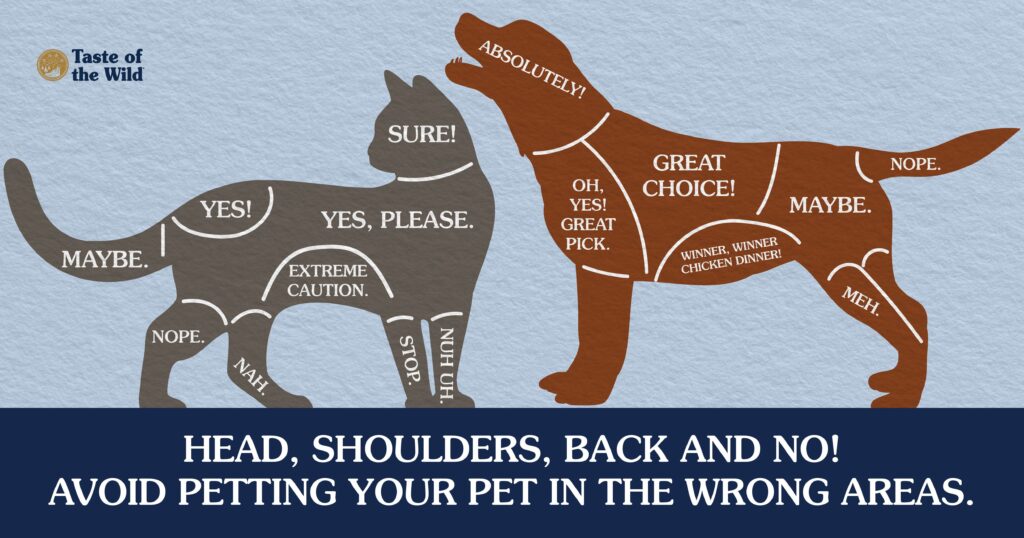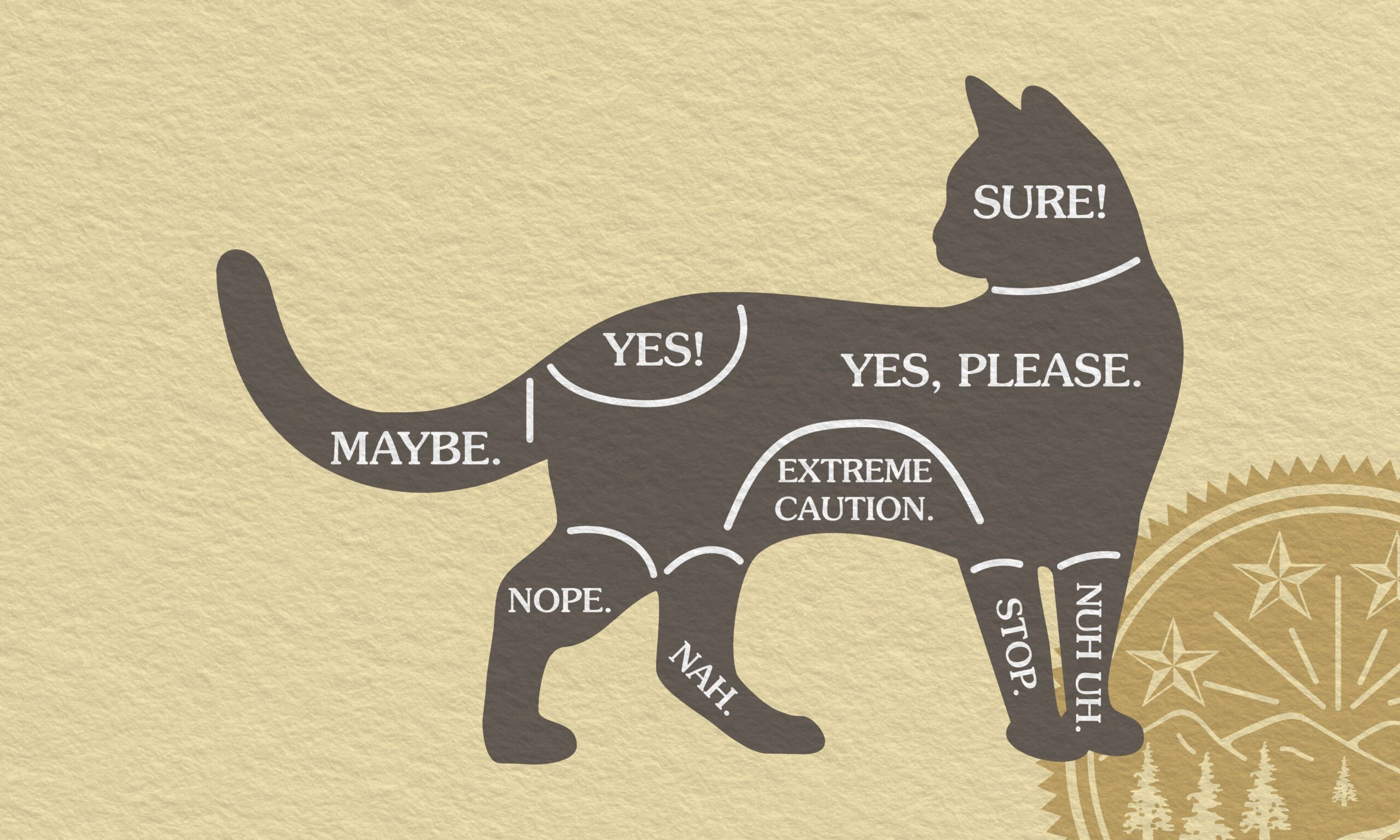
If you see a dog where dogs generally aren’t allowed, chances are it’s a service dog, and chances are that it’s on the job.
We get it: When you see an adorable dog while you’re shopping, running errands or doing something else where seeing cuddly dogs isn’t the norm, it’s hard to resist the urge to pet it, despite the clearly labeled vest that indicates that they’re on the job and off limits. That dog is providing valuable and necessary service to someone in need. We stress that if you notice the dog in question is a service animal, do not pet the canine or make eye contact with it. You shouldn’t talk to the dog or wave at it either. Avoid distracting a service animal at all costs.
Service animals are not pets. They’re often considered a healthcare option. One small distraction could be the difference between the dog staying alert to assist its owner or that owner’s safety being risked. So when you see the ”SERVICE DOG” or “WORKING DOG, DO NOT PET,” indicator, please take it seriously!
How do you know if a dog is a service animal?
Most service animals wear special collars, vests or harnesses. Service dogs have received specialized training to perform certain tasks for an individual with a disability — including physical, sensory, psychiatric, intellectual or other mental disabilities. This specialized training is what sets service animals apart from therapy dogs, emotional support animals and pets.
If you watch a service dog’s behavior from afar, you’ll notice that they tend to have impeccable manners, they appear calm, and they won’t seek attention. They’re meticulous employees operating efficiently with their handler. You’ll probably never see a service dog pulling on its leash or chasing a wayward squirrel – during working hours, anyway!
Service animals are always on call.
Being able to rely on a service animal can provide great comfort to those who need the trained dog’s assistance. Even if you think a service dog is doing “nothing” at that moment, you can rest assured that the canine is always providing essential care. The dog may be helping the owner keep their balance. They may be on high alert to predict a seizure before it occurs so the owner can take necessary precautions. Or they could be assisting an owner with a hearing impairment to navigate busy aisles at a grocery store. The list goes on with ways a service animal could be helping their owner, which could be invisible to other members of society.
It’s against the law to interfere with service dogs.
The Americans with Disabilities Act (ADA) of 1990 protects the rights of people with disabilities to have their service animals by their sides. Most states take it a step further and have some laws in place to punish those who interfere with a service dog’s duties. Yes, you read that correctly. Each state has its own laws on how they handle individuals who interfere with a service animal doing its job, and punishment ranges from paying a hefty fine to being charged with a felony. So bottom line, do not interfere with a service dog’s duties.
How should you react around a service dog?
Rather than engage with the animal, contain your excitement. Give the dog and its owner space. Service dogs are trained to tune out commotion, but it can still be difficult for them to concentrate if you are persistent in trying to distract them. They are still dogs, after all.
Second, be courteous of the service dog’s owner by not asking questions. The owner may not feel comfortable talking to strangers about the service dog or their disability. Respect their privacy and resist the urge for initiating such conversations.
Are there any exceptions to this advice?
Yes, there is one exception. If a service dog ever approaches you without its owner, this is the only time to scrap the guidance above and follow that dog! A service dog without its owner is seeking help. Follow the dog, identify the situation at hand, and if the owner needs medical assistance, call 911.
Long story short: Let service dogs perform their service, and we’ll all be better off!




